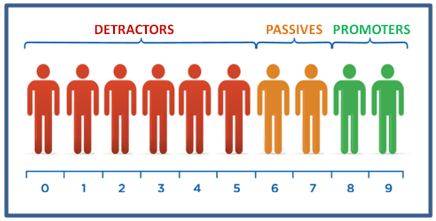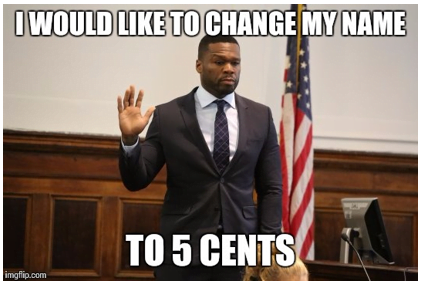
Getting broken up with sucks—especially when you’re completely blindsided by the news. Oftentimes, when you look back on the situation months later, you realize that there were actually plenty of warning signs that things were on the rocks. Maybe you ignored them, hoping things would get better with time. Maybe you even denied them, avoiding the subject altogether.
Either way, I bet we can agree that, had you identified and dealt with these issues head on, you may have been able to repair the relationship or at least end on better terms.
When a client cancels, it feels a lot like a break-up. You’ve spent years building a strong relationship with your client and when it goes south, it can be a real slap in the face (and a major hit to your business). Wouldn’t you be better off had you identified the warning signs and been prepared for the tough conversation?
Earlier this week, the #ppcchat crew had a fascinating conversation about this very subject (check out the stream cap here). At WordStream HQ, we’ve been working hard to develop a better sense of our clients’ health, so we can get involved and make adjustments before breakups occur. When things aren’t going so hot with your PPC clients, there are plenty of tell-tale hints. Here are the top five signals that we keep an eye out for:
#1. They’ve Granted Access to Someone Else
This is like finding a tube of someone else’s lipstick in your boyfriend’s medicine cabinet. It’s a pretty glaring signal that he’s getting intimate with another woman. Sure, it could belong to his mom (yeah, right) or left over from last year’s Halloween costume (sure) but it’s much more likely that he’s two-timing and your relationship is in jeopardy.
Typically, when a client grants access to someone new on the account, it’s a good indication that they’re shopping for a new agency. They’re giving prospective account managers the opportunity to dive into their account, assess its setup and create a proposal for what they would do to improve it.
In this case, you certainly could play dirty and delete your competitor’s access, but we recommend going the more ethical route and engaging in some real-talk with your customer. Take the time to ask them whether their needs are being met and have a good discussion about what they’re looking for. This allows you to better understand their pain points and gives you the opportunity to resell them by proving you’re the best man for the job.
#2. Your Primary Contact Has Changed
When your go-to contact moves on to a new position, it’s time to gear up for a tough conversation. The person who inherited their role wasn’t involved in your original sales conversations and may not be sold on your services. Even worse, they may be inclined to make big, sweeping changes to prove that they’re different from their predecessor.
When changes like this occur, make the effort to get to know your new point of contact and be ready to sell them on your services. We like to walk them through a brief history of the account and the goals that were set initially to demonstrate the progress we’ve made thus far. In addition, we take the time to understand their objectives, which may differ from those of our previous contact.
In circumstances where you lost your previous contact due to a merger or acquisition with a larger firm, you may find that the new company has a dedicated in-house team to manage their paid search efforts. In cases like these, be prepared to offer different services, like regular audits to hang on to the client (albeit in a different capacity).
#3. Your NPS Scores Are Plummeting
At WordStream, we measure customer happiness using the Net Promoter Score (NPS) method. When we first enacted this program, we discovered that these survey scores had a direct correlation with churn. Now, when a client submits a low NPS, we jump into save-mode to intercept the issue, understand its roots and fix it before it escalates to a cancellation.
Of course, we aren’t able to salvage all of these relationships—sometimes it’s just not the right fit—but addressing them makes a big difference. In some cases, these conversations have helped us reset clients’ expectations or understand that our goals are misaligned. Through others, we’ve identified our team’s weaknesses, and it has spurred us to take action to improve our internal processes. Even if we aren’t able to win over the client in jeopardy, we glean a ton of useful information and typically close out the relationship in a more amicable fashion.
Don’t have a regular NPS program in place? Even if NPS isn’t the metric you elect to measure, implementing an ongoing customer health survey will be well worth your while in reducing churn rate.
#4. Their Communication Style Has Shifted
During #ppcchat this week, Julie Bacchini posed this question to the group and nearly all of the responses warned to be weary of changes in the client’s communication style. This comes in many flavors. We’ve all worked with super-quiet clients and clients that like to check in pretty frequently—everyone has their own way of doing things—but, it’s a red flag when you see an abrupt change in their communication style.
For clients whom you talk to regularly, be on guard for abrupt radio silence; it may be a sign that they’re disengaged. On the flipside, if a more hands-off client is suddenly barraging you with questions, it may be an indication that they’re questioning your performance.
That said, their shift in behavior may have nothing to do with you. Rather than jumping to conclusions, we aim to address these situations directly with the client. Having an open conversation will help you understand what’s driving the change and what (if anything) you can do to resolve it.
#5. They’ve Dramatically Reduced their Spend
The only time your clients should be cutting back their PPC spend is if you’ve made their accounts more efficient and they’ve elected to pump their savings into another branch of the business. Otherwise, it’s a not-so-subtle indication that they’re scaling back their paid search efforts and, likely, are questioning the value it brings to their marketing engine.
When a client informs you that they’re reducing their budget, take the time to understand the motivations behind this change and whether it’s something for you to be concerned about. If they’re questioning whether paid search is the right solution for them, be sure to have data on hand to prove why it’s the right direction to go!
Now That You Know the Warning Signs, Be Ready to Combat Them!
When you’re faced with any of these scenarios, the key is to open the lines of communication. Rather than being defensive, take the time to listen and understand the client’s pain points. Once you understand the problems, you can make a plan to salvage the relationship. Depending on the size of the accounts in question, you may even want to appoint a team member to devote extra attention to reenergizing these high-risk clients.










